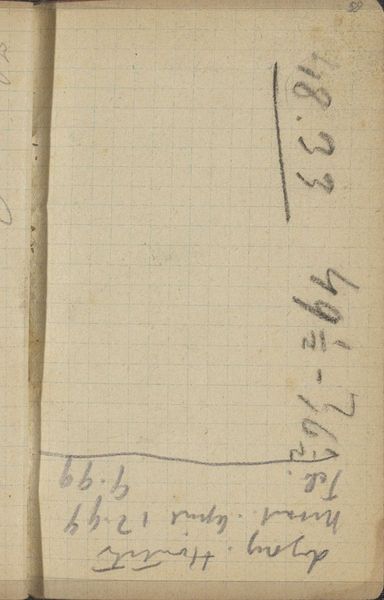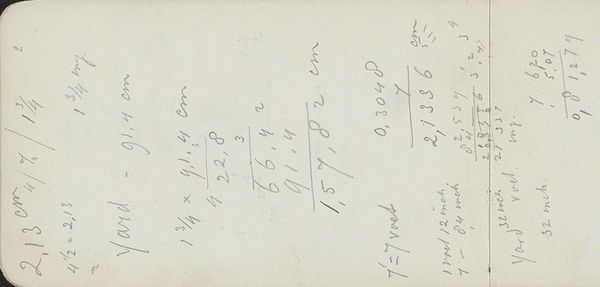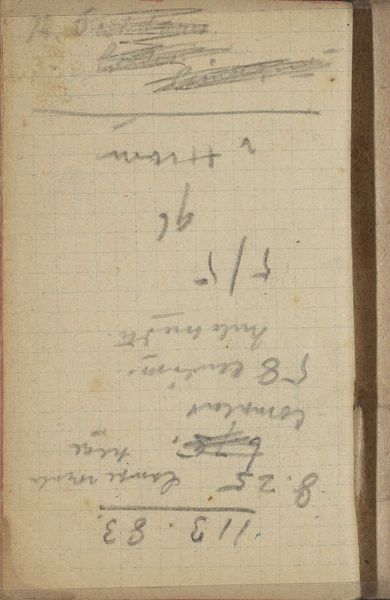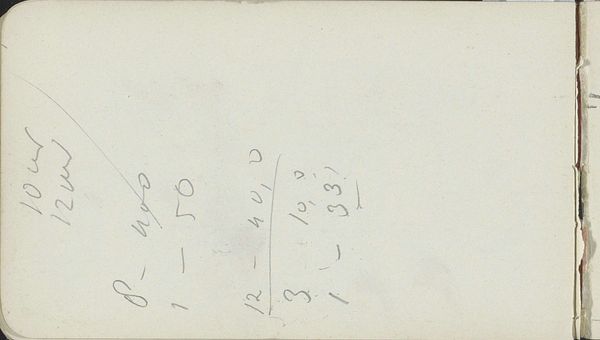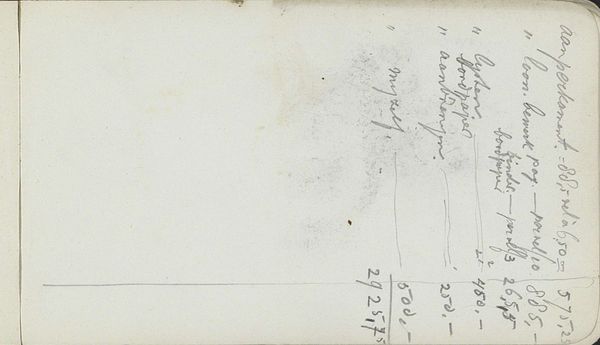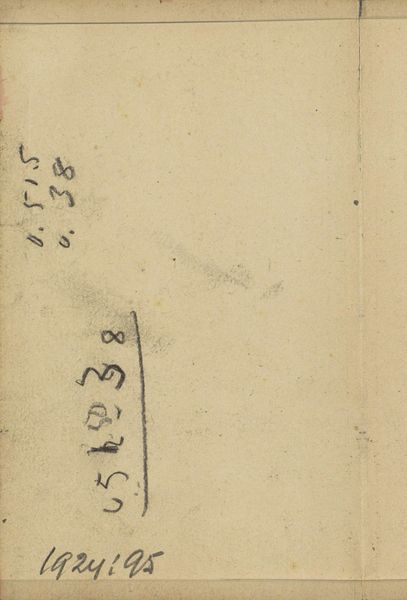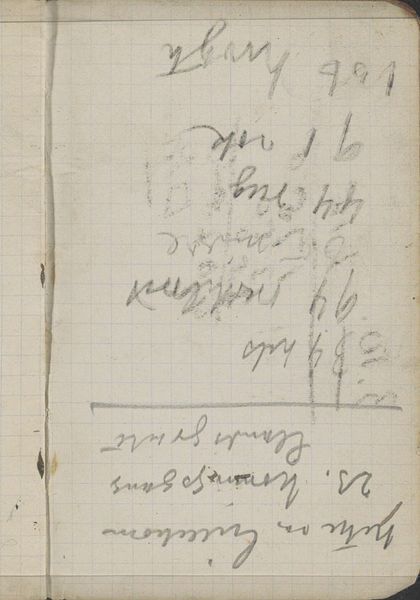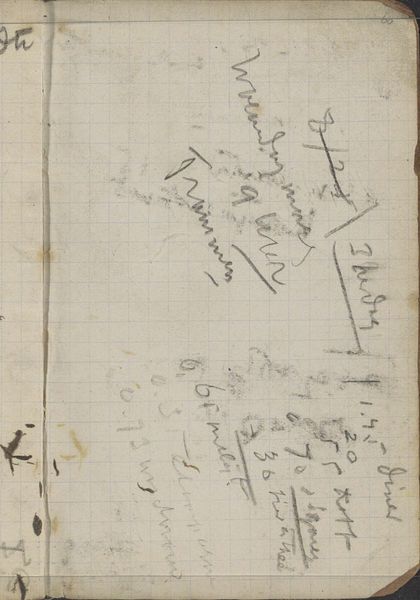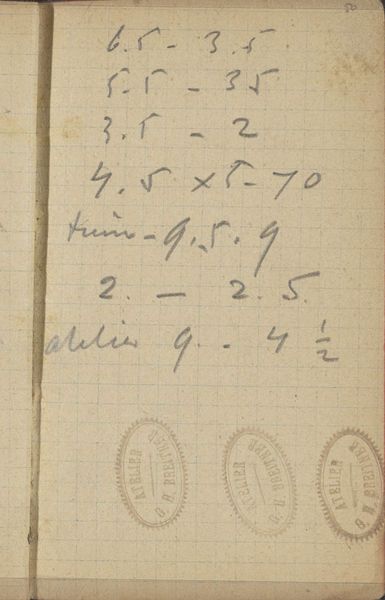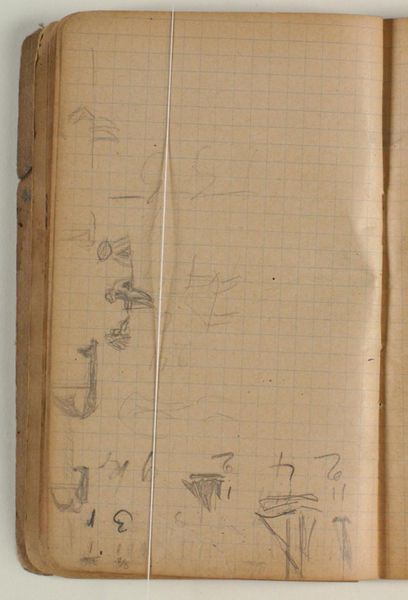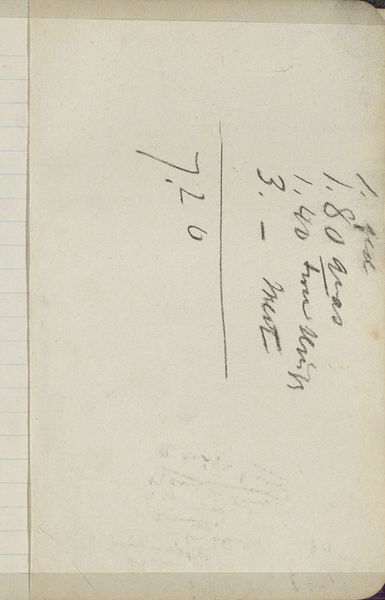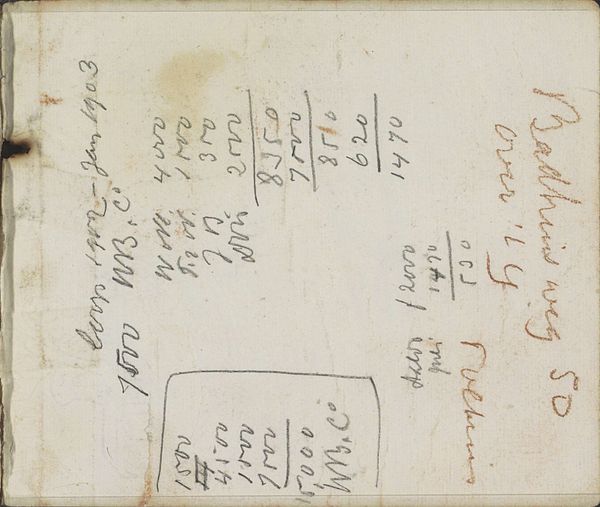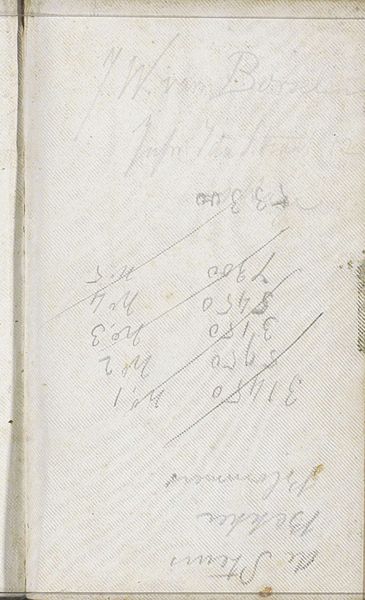
drawing, paper, ink, graphite
#
drawing
#
paper
#
ink
#
hand-drawn typeface
#
graphite
#
modernism
Copyright: Rijks Museum: Open Domain
Curator: Let’s have a closer look at this drawing, titled "Getallen," which roughly translates to "Numbers." It's an 1893 work on paper by George Hendrik Breitner. The Rijksmuseum holds it in their collection. What are your immediate impressions? Editor: It feels like looking over someone's shoulder as they jot down notes – casual, immediate. The graphite and ink on paper, plus the lined sheet, bring it down to earth, make it real. It looks functional. Like the art is simply embedded as residue of labor. Curator: Exactly. Breitner was interested in representing modern life, including the everyday transactions and material realities of the period. This work underscores his interest in that. He moves beyond the painted form into raw records. Editor: The casualness intrigues me. There's a looseness to the numbers, yet an overall structural intent because there are clearly separate columns of figures, which contrasts sharply with a formal painting. I bet that little flourish is a total subconscious reveal from the artist. Curator: Consider the historical context: the late 19th century was a period of rapid industrialization and growing commercial culture. Artists grappled with how to represent and reflect the changing nature of labor, production, and value. This little notebook excerpt places labor directly within artistic practice. Editor: And, Breitner clearly left in what seem to be some scribbles near the page’s bottom; did he want to display this rough-and-ready look or, equally probable, did the image just "leak" out without curatorial intention? It gives you the impression of a genuine connection to his stream of thought; that’s a bold invitation. Curator: His use of these ordinary materials brings the work out of an idealized artistic plane into something fundamentally approachable and relatable to the social dynamics of the period. By drawing with what's at hand, rather than insisting on the materials and trappings of high art, Breitner seems to suggest the value of the materials surrounding art production. Editor: It prompts us to appreciate how closely intertwined material things can be with artistic imagination and the broader, emerging modernity that characterized his historical situation. I see a soul caught mid-calculation! Curator: It’s the kind of document that reminds us that even art is inevitably connected to those concerns, even in unexpected ways.
Comments
No comments
Be the first to comment and join the conversation on the ultimate creative platform.
